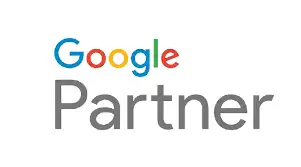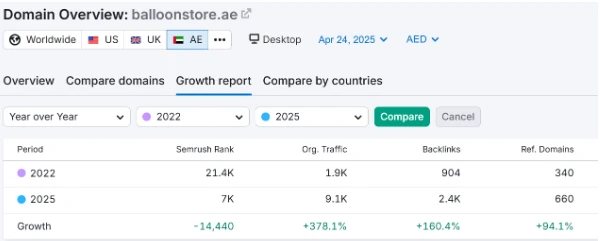Enterprise Systems and its Benefits
- digitalmanqoosh
- May 27, 2023
- Uncategorized
- 0 Comments
Enterprise information systems provide a technological platform that enables organizations to integrate and coordinate their business processes on a robust foundation. An EIS is currently used in conjunction with customer relationship management and supply chain management systems to automate business processes. An enterprise enterprise system definition information system provides a single system that is central to the organization that ensures information can be shared across all functional levels and management hierarchies. An EIS can be used to increase business productivity and reduce service cycles, product development cycles and marketing life cycles.

Enterprise systems might likewise empower a business to diminish the expense of information technology and minimize the manual input of information. These enterprise system characteristics offer specific advantages, for example, the backing of cooperation, an enhanced response to the marketplace, expanded work quality and increased worker collaboration and effectiveness. Enterprise application software introduces automation in areas such as HR, payroll, marketing, and data entry, freeing up employees to focus on tasks that add more value to the enterprise. It delivers a standard set of collaboration tools and workflow solutions that reduce interdepartmental silos. These insights can help you identify areas for improvement and optimize their document management processes.
What Is the Importance of Enterprise Resource Planning?
Each room is connected via a screen and keyboard, one containing a male, the other a female, and the other containing a male or female judge. The female tries to convince the judge that she is the male, and the judge tries to disseminate which is which. This centralization also reduces the risk of version conflicts and data duplication. This system makes it easier for employees at your company to access, share, and collaborate on files. These systems allow people to communicate with each other, make comments and edits on the document, and approve or reject the new changes on the file as necessary.

Thanks to it, companies can launch efficient campaigns, improve their content and provide multichannel support to their clients. Marketo offers highly effective automation and lead generation tools, as well as instruments for enhanced customer communication and the creation of unique promotional campaigns. Predictive analytics based on artificial intelligence helps create personalized content for each customer.
Enterprise resource planning
Customer Relationship Management (CRM) plays an essential role in company management. CRM is mainly focused on data processing, interaction with buyers, improvement of marketers’ job. Enterprise Information System (EIS) Functions[4]
Enterprise information systems have both operational (transaction-processing) and informational (data storage, retrieval, and reporting) functions. ERP software also provides total visibility, allowing management to access real-time data for decision-making. Then, the hosting company loads the applications onto the server the client is renting, and both parties begin working to integrate the client’s processes and data into the platform.

Each type of enterprise application can be considered a “system” due to the integration with a firm’s business processes.[6] Categories of enterprise software may overlap due to this systemic interpretation. For example, IBM’s Business Intelligence platform (Cognos), integrates with a predictive analytics platform (SPSS) and can obtain records from its database packages (Infosphere, DB2). Enterprise management systems are software packages created with large businesses in mind. They allow for many applications and softwares to be controlled from a central location. Most of them are cloud-based, and sold in packages with specific departmental needs as their focus. When all of these applications fall under one umbrella, it means that there are less individual instances for IT to monitor.
Enterprise Resource Planning (ERP)
Since ERP systems are comprehensive across an enterprise, their management often involves a partnership with the CFO as well as the CIO, COO, and other key executive leaders. A complete ERP suite also includes enterprise performance management, software that helps plan, budget, predict, and report on an organization’s financial results. A typical enterprise information system would be housed in one or more data centers, would run enterprise software, and could include applications that typically cross organizational borders such as content management systems.
The test is named after Alan Turing, the founder of the Turing Test and an English computer scientist, cryptanalyst, mathematician and theoretical biologist. Beyond data storage and security, Pandadoc’s DMS helps you cut down on tedious administrative tasks, including document creation and data entry. Thus, it helps to protect sensitive information from unauthorized access or data breaches.
A guide to artificial intelligence in the enterprise
Enterprise resource planning software offers single-system solutions that integrate processes across the business. These applications allow users to interact within a single interface, share information, and enable cross-functional collaboration. Men’s grooming product maker Fulton & Roark successfully implemented enterprise resource planning to better track inventory and financial data. Like many other businesses, the North Carolina company used spreadsheets to track inventory and accounting software to record financial data. Enterprise resource planning (ERP) is a platform companies use to manage and integrate the essential parts of their businesses.
It also includes software distribution, version control, backup and recovery, printer spooling, job scheduling, virus protection and performance and capacity planning. From a hardware point of view, enterprise systems are the servers, storage and related programming software that large organizations use as the establishment for their IT infrastructure. These frameworks are intended to oversee extensive volumes of critical information. These frameworks are commonly designed to provide abnormal amounts of exchange or transaction execution and data security.
ERP Modules and Their Features
As such, your choice software must allow team members to work together on documents on the go regardless of their physical location. Ensure compliance with industry-specific regulations and data protection laws. Version control functionalities also ensure that the latest document versions are always accessible. The plan outlines the proper steps, timeline, and responsibilities of key personnel involved in the process. It involves using specialized software to manage both structured and unstructured data. Operational CRM contacts clients, stores all the necessary information on them, helps companies during the entire customer lifecycle.
- Version control functionalities also ensure that the latest document versions are always accessible.
- Email marketing software offers data interpretation option based on results from surveys, interviews, contact forms and comprehensive website activity analysis.
- She combines her own in-depth research with the direct input from seasoned engineers to create insightful and empowering content.
- An Enterprise Document Management system may sometime be a subcategory of an Enterprise Content Management strategy.
- The process often integrates accounts payable, stock control systems, order-monitoring systems, and customer databases into one system.
- Analytical CRM creates efficient processes to respond to customer desires.
In order to move a DBMS to another platform, a version must be available for the new hardware and operating system. There are a large number of programming languages and development tools for writing today’s applications. Each development system has its own visual programming interface for building GUI front ends and its own third- or fourth-generation language (3GL or 4GL) for doing the business logic.
What is Enterprise Systems
While financials handles one area of the business, ERP encompasses a wide range of business processes—including financials. ERP systems are designed around a single, defined data structure (schema) that typically has a common database. This helps ensure that the information used across the enterprise is normalized and based on common definitions and user experiences. Simply put, ERP is the vehicle for integrating people, processes, and technologies across a modern enterprise. Enterprise software, or enterprise application software, is computer software used by organizations rather than individual users. Common types of enterprise software include contact centre software, business intelligence, enterprise communication, inventory management, marketing tools, online payments, and enterprise resource planning.














